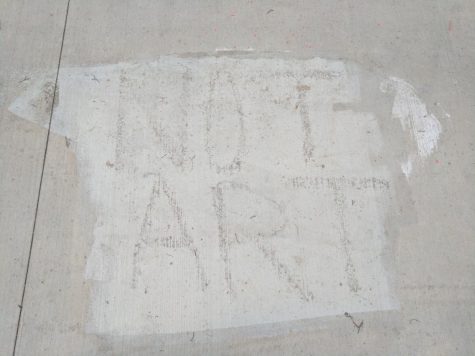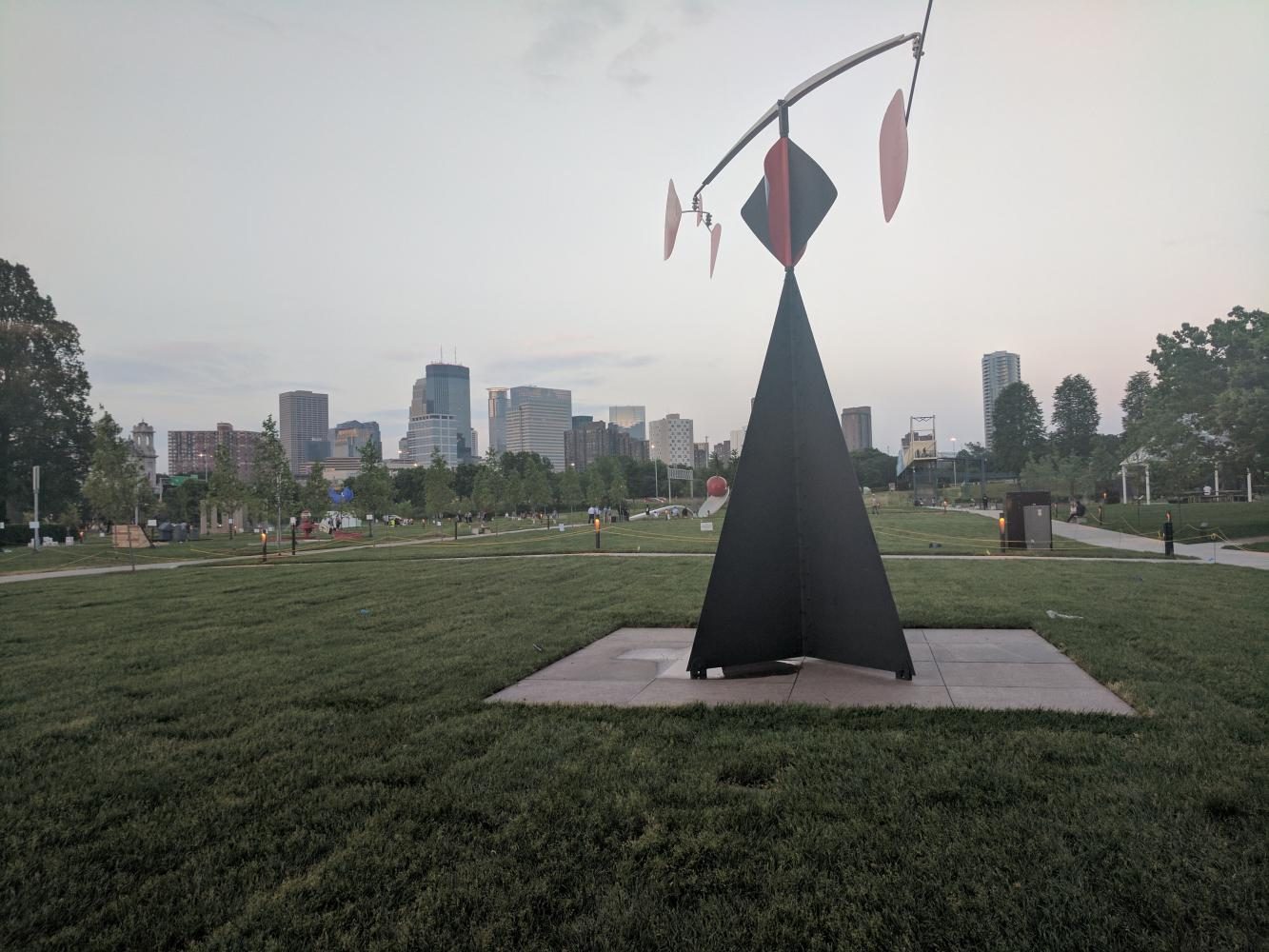Offensive sculpture at the Walker leads to justice for native community
Above is the area where Scaffold once towered, a reminder of how one man’s ignorance can be all it takes to perpetualize oppression and cause an uproar. The “art” piece was later replaced by the sculpture seen in the picture.
June 14, 2017
“It makes me feel very disrespected as a person, and it makes me feel like my culture, and our history and how we’re viewed, has just been slandered. It’s like [my heritage] is just a joke and complete nonsense. That’s how I view it, ” said 10th grader Camiella Been in response to the recent controversy at the Walker Art Center.
For the reopening of the Walkers sculpture garden (featuring the famous “Spoonbridge and Cherry,” an instantly recognizable Minneapolis art piece), they added many new sculptures. Among such sculptures was a piece by Sam Durant, entitled “Scaffold.” The purpose of this piece was to raise awareness on capital punishment, and to retell America’s violent history through physical art.
The sculpture received much backlash almost as soon as it was assembled. Native communities were not happy to hear of a white male from California making a full scale model of the gallows used to hang thirty-eight Dakota soldiers in Mankato.
“I was ignorant,” Durant told MPR (Minnesota Public Radio), “I didn’t understand how powerful a symbol of the Mankato gallows is, was and is, for the Dakota people.”
The Dakota Uprising of 1862 claimed approximately 700 lives in just five months, 600 of which were white settlers and soldiers; the remaining hundred being Souix soldiers. However the real damage for the natives began after the war ended with the mass hanging in Mankato on December 26th.
Immediately after the war ended, Dakota people were forced into internment camps all over the midwest while they awaited relocation by the hands of the U.S. government. The most notable of these camps was on Pike Island in Saint Paul, just below Fort Snelling; where over 1600 Dakota women, children, and elders were held for the following 5 months after the war ended. In that short amount of time, more than 300 accounted for deaths occurred due to the poor living conditions on the island. Few survived the harsh winter, the little amount available food and resources, poor sanitation, and no shelter besides teepees. The majority of the deaths can also be contributed to the extreme outbreak of cholera, where proper medical care was not administered by the U.S. Army posted at Fort Snelling.
With the high amount of calamities, it would make sense why this topic would be subject to damages with both races and their relations between one another. However the particular issue with this art piece is the concern with a white man recreating the structure used to kill 38 Dakota men within 10 minutes.
“The thing about being Native American,” said Evan Lanigan, a sophomore in the All Nations program, “with something like that, with the thirty-eight (plus two) that were hung, that’s very significant to most Native Americans. Something that killed forty people shouldn’t be considered art… That’s just disrespectful.”
Lanigan then went on to describe that if he, a Native American, made a model of a gas chamber used in the holocaust to rapidly kill large groups of people, people would take offense to it because he is not a Jew, nor any of the other groups attacked during that genocide. And that anyone with knowledge about what transpired during that period would know that it would be a bad idea to do so. So now it’s all of a sudden okay.
“I don’t understand how you can just make that and expect for there not to be an uproar or anger,” said a baffled Elijah Been, a 10th grader, also in All Nations (and Camilla’s brother), “For one, it’s just re-opening old wounds [and] historical trauma, and for two… Just, why the f**k would you do that? I just feel angry, and a bit sad too,” he informed me, “There are people whose relatives were victims of that. Shoot, even my girlfriend, her great grandpa was hung there. It’s just bringing back sadness to people whose relatives were taken from them.”
The sculpture had done well in other exhibitions, generating good profit, which was the Walker’s main prompt for hosting it.

“Oh, the Walker putting it on display [was the most insulting part about this]. I know that there are some sick individuals out there who would do something like this, but when you have a multi-million dollar museum putting that up on display for the public to see and for kids to play on. I don’t know it’s just really insulting and really gross.” (E.) Been said.
“I feel like just the Walker putting it up on display [was the most insulting], because if they had any respect for Native people, and just different cultures in general, I feel like that never would’ve been on display!It would’ve never been put up, and they never would have had to take it back down if they had just thought about how this would make people feel!” (C.) Been said.
To resolve this conflict, the Walker complied with the many requests to take down the sculpture, with it being branded as a hate crime, furthering the oppression Native Americans. Scaffold was disassembled, and currently awaits a ceremonial burning by the hands of local Ojibwe and Dakota/Lakota tribes. The structure was dismantled and relocated to the Fort Snelling area, to the lands significance in the Dakota Uprising.
“I feel like it’s a really good resolution. If it was put up in the first place [in 1862] then why not have them be the ones taking it down in whatever way we see fit.” said Lanigan.
(C.) Been described great enthusiasm and support in the method. “Burning it? Hell yeah!”






